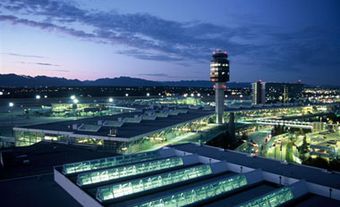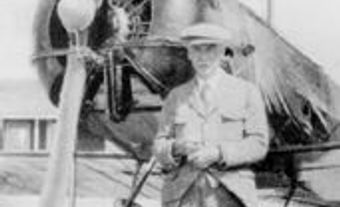Montreal–Mirabel International Airport is located in Mirabel (formerly Sainte-Scholastique), Quebec, about 40 kilometres northwest of Montreal. It was supposed to become the main international airport in eastern Canada. Opened in 1975, Montreal–Mirabel had the largest surface area of any airport in the world. It was supposed to accommodate nearly 40 million passengers per year by the year 2000. Many factors contributed to this airport’s decline; for one thing, it was far from downtown Montreal and hard to access. In November 2004, the airport stopped handling passenger flights. Now it is used for cargo flights and general aviation and as a centre for Quebec’s aerospace industry. (See Canadian Aerospace Industry.)

Background
In the 1960s, rapid growth in air transportation, together with the unexpected success of Expo 67, led the federal Department of Transportation to design a new international airport for Montreal. During that decade, a major modernization project had been undertaken at Dorval Airport (see Dorval), but it was still considered too small for a city whose population was expected to reach 7 million by the year 2000. Also, the late 1960s saw the arrival of the first jumbo jets and testing of supersonic aircraft such as the Concorde.
To build Montreal–Mirabel International Airport, the Government of Canada expropriated about 392 square kilometres of land. Plans called for this new airport to have six runways and six terminals. New autoroutes and a high-speed train known as the TRRAMM (the French acronym for Montreal-Mirabel Airport and Regional Rapid Transit) were to connect Montreal and Ottawa.
At the time, Mirabel was regarded as the most modern airport in the world. Located far from town and surrounded by farmland and forest, it could operate 24 hours per day without disturbing local communities. Its ultra-modern, highly efficient terminal minimized walking distances for passengers. Mobile pedestrian bridges between the terminal gates and the parked aircraft were another important innovation. (See also Airport Architecture.)
Decline
A number of factors contributed to Mirabel Airport’s decline. First, the major oil crisis of 1973–1974 raised the cost of air travel. (See also Oil and Gas Policy in Canada, 1947–80.) Second, the autoroutes and trains that were supposed to connect Mirabel to Montreal and Ottawa were never completed. Third, although Mirabel was supposed to have replaced Dorval Airport completely, Dorval continued to operate: while Mirabel handled international flights, flights within Canada and the US went through Dorval. This posed major problems for passengers who had to make transfers in Montreal before or after international flights, because of the long distance that they had to travel between the two airports. This inconvenience led travellers to avoid both of Montreal’s airports as much as possible. Toronto gradually became the preferred destination for international flights. Fourth, Montreal’s population grew more slowly than projected, so demand for flights did not increase.
All of these factors led to the decision to modernize Dorval and make it Montreal’s main airport. It was renamed Pierre Elliot Trudeau International Airport, or Montreal-Trudeau for short. (See also Pierre Elliot Trudeau.)
Controversial Expropriations
A major controversy surrounding Mirabel airport involved the expropriations and the demolition of the village of Sainte-Scholastique. The airport ultimately occupied only about 20% of all the expropriated land. In total, the expropriations affected nearly 12,000 people and 14 municipalities. Also, the compensation received by the people who had lost their homes and land was below their market value — this had been some of the best agricultural land in Quebec. The federal government gave back 80,000 acres of this land in 1985 and another 11,000 acres in 2006.
The former Mirabel Airport is now called the YMX International Aerocity of Mirabel, a name that reflects its new industrial role. The aerospace industry and the air-freight industry have given Mirabel a new lease on life.

 Share on Facebook
Share on Facebook Share on X
Share on X Share by Email
Share by Email Share on Google Classroom
Share on Google Classroom

.jpg)
